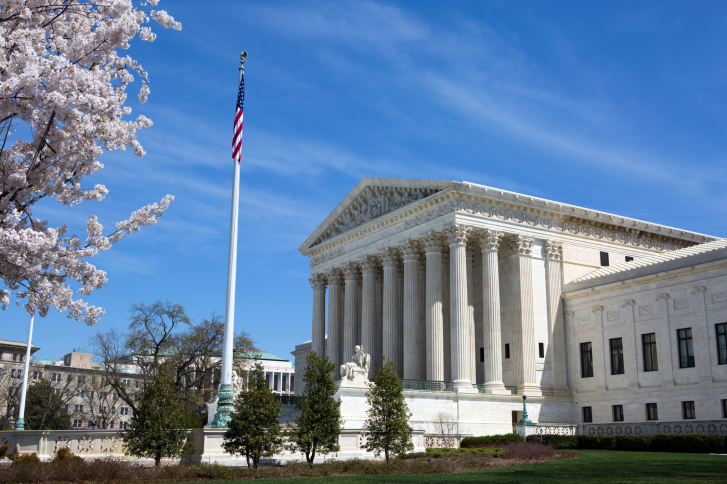Consumer Power Report #413
Welcome to the Consumer Power Report.
Have you heard? Obamacare survived! It got to that magic number it was looking for to make everything right! Or it got to half the number the Congressional Budget Office predicted it would get to after the Supreme Court ruling. Either way, it’s totally okay now and is absolutely going to survive and be the law of the land forever and ever despite anything those opponents of the law tell you.
This is a perfectly logical position to hold if you are, say, Chuck Todd, and believe the election of Hillary Clinton in 2016 is inevitable. However, if you believe there is a possibility she is not the next president of the United States, you have to evaluate this rather differently.
All the 7 million number the White House will be touting achieves is an end to the “website is broken” storyline that began unexpectedly last fall. Opponents of the law, who had expected all the other disruptions Obamacare spawned (the substance story of people losing their plans, losing access to their doctors, the broad disruption to employers and employees), were given an additional process story in the broken exchange and bungled launch and collapsing state exchanges. That latter storyline overwhelmed people in both parties – it was such a public faceplant that it made things seem even worse. But it was also a story destined to end eventually – indeed, it’s surprising it lasted for a full six months! – and it has largely ended due to all the exemptions, waivers, loopholes, and extensions the Obama Administration has slapped all over this launch process, like using bumper stickers to hold a jalopy together.
This is why talk of the 7 million figure as salvation from supporters of the law is completely bonkers: All you did was meet your lowered policy expectations. In 2014, it is clear Republicans intend to run against Obamacare: It is a hot-button issue for their base, it is perfectly designed to turn their voters out in a base election, and they don’t even need to coalesce around a specific legislative alternative in order to get those votes (rather, they can continue to let a dozen different options sprout here and there). If the odds play out as they currently appear, this positioning will allow them to take the U.S. Senate.
Then the 2016 cycle will be upon us, and at that point, Republicans will ultimately choose a nominee (primarily because they have to) – and this nominee will have a replacement plan for Obamacare. That will effectively become the GOP plan, and the party will run on it. This plan may not become law, but it will be the framework for the reform they push in the wake of the 2016 election should they take the presidency.
The reason the number of people signed up for Obamacare – via the exchanges or Medicaid – matters is that it is, unexpectedly, a much smaller number than originally anticipated. This is in part due to the failure of the approach, and in part due to failure of execution. What is truly surprising is the degree to which the previously uninsured have not signed up for either program.
If the trend line continues, the possibility of a Republican nominee confronting a scenario where fewer than 10 million previously uninsured view Obamacare as their ticket to insurance is far more politically palatable than one where nearly three times as many people were supposed to be locked into the program by 2017.
The Republican Party is wedded to the repeal of Obamacare for the foreseeable future. There will not be a single viable candidate in 2016 who is not in favor of repeal or avoids the challenge of putting forward a health care policy designed to replace Obamacare should they be elected. The health care law’s stumbles out of the gate were unexpected, and it’s understandable that supporters would look for any silver lining as a sign of hope that this approach would be a success. But it is a mess. It will continue to be a mess. The winners are heavily outnumbered by the losers at the current moment, and there is no sign that a bend in the cost curve or a shift in premiums will change that dynamic. Supporters of the administration will try to find poll numbers that indicate avenues to success or achieve more support for the law. But the negatives of the law have eroded support among the very constituencies who were supposed to love it.
Obama promised that under his law, we could keep our plans, we could keep our doctors, and our premium costs would go down. None of that has happened. And unfortunately for supporters of the law, that’s what people care about.
All Obamacare had to do to be a popular success was to work – to match up with the expectations Obama and the Democrats set for it. If it did, they would be running on the issue for a generation – if it didn’t, the issue would be a weapon for the other side.
It hasn’t. They can’t. It is.
And if you think I’m wrong, there’s a handy test for that this fall: It’s called the ballot box.
— Benjamin Domenech
IN THIS ISSUE
HOW WELL IS OBAMACARE COVERING THE UNINSURED?
The LA Times figure includes 2 million uninsured purportedly covered through the Exchanges, 3 million previously uninsured young adults purportedly covered under their parents’ policies and 4.5 million covered through Medicaid.
Roughly 1 Million With Cancelled Plans Remain Uninsured. The problem with the first figure is that the LA Times itself reports “Fewer than a million people who had health plans in 2013 are now uninsured because their plans were canceled for not meeting new standards set by the law, the Rand survey indicates.”[1]This means we have to subtract this ~1 million newly uninsured group from the 9.5 million to arrive at the net reduction in uninsured of 8.5 million.
The Number of Previously Uninsured Young Adults Covered by Parents Half as Large as Reported. It was announced nearly 2 years ago that 3.1 million previously uninsured young adults age 19-25 had gained coverage as a consequence of the Obamacare mandate that parental plans cover such dependent “children.” This was based on an analysis of data from the National Health Interview Survey. However, there’s two other much larger surveys that both show much smaller declines: 1.8 million according to the American Community Survey (ACS)[2] and 1.4 million using the Current Population Survey (CPS).[3] I’m willing to split the difference and say that this feature of Obamacare reduced the number of uninsured young adults by 1.6 million, meaning the net reduction in uninsured across the entire population is 7.1 million.
So is 7.1 million fewer uninsured a job well done or something in need of drastic improvement? The non-partisan Congressional Budget Office has been the official “scorekeeper” for Obamacare since well before it was even passed. I see no reason not to use CBO projections of coverage as the basis for determining how well the law is doing at this juncture. Indeed, using CBO projections arguably will make the law look far better than it would otherwise, since CBO has rather drastically scaled back its expectations for the law since 2010. CBO’s estimates of the number of uninsured we might have expected to see in 2014 absent the law have fluctuated over time. So the fairest comparison is to measure performance against the projected percentage reduction in the total number of uninsured who we would have in 2014 were the law not enacted.
SOURCE: Forbes
INSURERS CALCULATE 2015 PREMIUMS
Even before enrollment closes Monday, California has far exceeded its initial goals for signing up people under the Affordable Care Act. Although the sheer volume of 1.1 million policyholders is impressive for a brand new government program, the number of sicker patients is what’s likely to draw the most attention.
How sick they are and the size of their medical bills will be front and center in the weeks to come as insurers begin drawing up next year’s insurance rates, which will become public this summer.
The outcome – hefty rate hikes or more modest increases – in the pivotal state of California could help shape political races nationwide and the future of enrollment for President Obama’s signature law.
WellPoint Inc., parent of California’s leading health insurer in the exchange, Anthem Blue Cross, has already predicted “double-digit-plus” rate increases on Obamacare policies across much of the country.
Other experts discount the notion of soaring premiums because the Obama administration has programs in place to help health plans offset losses from higher-cost customers.
Meanwhile, most everyone involved is waiting to see how many additional people rush in by Monday, the last day to begin enrolling in Obamacare.
But health insurers aren’t wasting any time sizing up what patients are costing them now and what that will mean for 2015 rates.
Hunkered down in conference rooms, insurance actuaries are parsing prescriptions, doctor visits and hospital stays for clues about how expensive these new patients may be. By May, insurance companies must file next year’s rates with California’s state-run exchange so negotiations can begin.
“If rates in California increase by 20%,” said Robert Laszewski, a healthcare consultant in Virginia, “enrollment will go down and any healthy people will bail.”
SOURCE: Los Angeles Times
Friends of the Obama administration gain credibility and actually help their President by insisting that the Obama administration release the number of policies in force. This is so because there are only two and a half conclusions that can be drawn from silence: either the Obama administration has the number and is refusing to provide it or it just doesn’t have the number. Not releasing a number or decent approximation is contrary to the transparency values that the Obama administration espouses. My FOIA request on the topic is, like many others, I suspect, unanswered. Not having the number is perhaps even worse. I have read much of the ACA and its regulations and I cannot think of a single economic or legal matter that turns on the number of people who have “enrolled” in plans on the Exchange. Insurers get paid, tax credits are advanced, and a whole host of other important financial and legal consequences depend instead on the number of people who, for any given month, actually have coverage, have a policy in force. I say “two and a half” conclusions because there is a variant of not having the information that is sometimes advanced – not having precise enough information to release. But this is about as flimsy as it gets.
Governments release approximate numbers all the time. I believe Americans are sophisticated [enough] to understand the word “about” and the concept of a “good faith estimate.” Any lack of precision down to a single individual does not excuse a failure to release relevant information. I am confident that the public would be well served by having a policies in force number that was accurate even to just two or three significant digits.
SOURCE: ACA Death Spiral
REFORMING MISSOURI’S MEDICAID SYSTEM
First, empower Medicaid’s patients. An important Oregon study suggests one of the few health benefits of Medicaid enrollment is the knowledge that an enrollee will not become bankrupt if the worst happens. With that in mind, Missouri should convert much of its Medicaid program into government-held health savings accounts (HSAs), splitting current Medicaid spending levels among the beneficiaries. After purchasing at least a catastrophic health care plan, beneficiaries could roll over any remaining money from year to year. This would provide the safety net Medicaid was supposed to be while still allowing patients to tailor their spending to their needs. One size does not fit all when it comes to health care. The state should stop acting like it does.
Second, give Medicaid enrollees an incentive to leave the program. Another Oregon study found that rather than decrease unnecessary emergency room use, Medicaid enrollment actually increased it. As a reform, then, if an enrollee abides by the program’s rules and avoids wasteful ER use, the enrollee could take some percentage of the remaining money with him or her when leaving the program, either as a private HSA or as a reduced amount in cash. This would help both the patient and the taxpayers: It would reward the Medicaid enrollee for healthy and fiscally prudent behaviors and reduce taxpayers’ costs.
Third, with so many newly minted, price-conscious Medicaid consumers, implement price transparency measures for common medical procedures. The federal government has started the process of forcing greater hospital price transparency, but states have done a poor job of empowering customers with the information to shop for health care like they can for cars, homes and even Lasik eye procedures. This also would reduce Medicaid access problems; rather than enrollees having to find providers who accept Medicaid patients, Medicaid beneficiaries could go practically anywhere with their HSA accounts.
Finally, pursue regulatory reforms of “certificate of need” and “scope of practice” laws, areas of regulation that often act as needless barriers to patient care. Along with ensuring prices are as transparent as possible, the state should make sure care is as accessible as possible through as many places and people as possible. Well-researched regulatory reforms that remove unnecessary obstacles to care would help both the poor and middle class.
SOURCE: Columbia Tribune
MARYLAND REPLACES TROUBLED HEALTH EXCHANGE
Like Maryland, Connecticut was one of the first and most enthusiastic states to embrace the idea of building its own insurance exchange rather than using a federal site to implement the law’s sweeping changes in health-care coverage.
But unlike Maryland, where the system crashed within moments of launching and has limped along ever since, Connecticut’s exchange has worked as smoothly as any in the country.
Maryland is not alone in having deep-seated problems with its health marketplace. Technical issues also have plagued Oregon, Minnesota and Hawaii. But Maryland will be the first to walk away from its site, a particular embarrassment for Lt. Gov. Anthony G. Brown (D), who was placed in charged of implementing health-care reform in Maryland by Gov. Martin O’Malley (D).
It was not immediately clear how much more money Maryland may have to invest to get a fully functioning system, according to the two individuals, who spoke on the condition of anonymity because they were not authorized to discuss the changes.
SOURCE: Washington Post
OREGON’S FAILED HEALTH EXCHANGE
CoverOregon.com, the state’s equivalent of HealthCare.gov, is the only insurance exchange in the country on which people still cannot buy coverage entirely online. The flaws are so deep that Gov. John Kitzhaber concedes the state may give up on its own exchange and move to the federal HealthCare.gov next year. The challenges were so persistent that the state received federal permission to add a full month to its open enrollment season. The deadline for most of the country to become covered is 11:59 p.m. Eastern time Monday; here, enrollment will run through April.
The finger-pointing and political posturing have escalated as the exchange story has unfolded. Now, as states like Washington to the north and California to the south celebrate their progress, Oregon’s controversy is in full eruption. Kitzhaber, who is running for reelection this fall, faces mounting questions over whether he could have stopped the disaster. And the exchange board is hunting for its third leader since December.
Oregon – a liberal state with an independent, hipster culture that embraces handlebar mustaches, composting and vintage shops – set sky-high expectations for what it could do with the Affordable Care Act. But Oregonians involved with the build-out interviewed here described a process that went awry early on: exchange designers who overreached, a contractor that didn’t complete the job and state officials who didn’t recognize the calamity unfolding right in front of them. That simple vision of expanding health care morphed into a byzantine mess of broken technology and political recrimination.
SOURCE: Politico
HEALTH CARE SPENDING GROWTH HITS TWO-YEAR HIGH
Health care spending rose at the fastest pace in 10 years last quarter, a development that could foreshadow higher costs for consumers this year.
Expenses for health care rose at a 5.6% annual rate in the fourth quarter, the Bureau of Economic Analysis said last week. The jump triggered a sharp upward revision in the government’s estimate of consumer spending overall and accounted for nearly a quarter of the economy’s 2.6% annualized growth in the last three months of 2013.
Driving the increase was an $8 billion rise in hospital revenue – more than the previous four quarters combined, according to the Census Bureau and Royal Bank of Scotland. RBS economist Omair Sharif says the increase in hospitals’ income was puzzling because the number of inpatient days dipped 1% during the fourth quarter.
The increase is a marked change from slow-growing rates of health care prices and spending in recent years. Many unemployed Americans went without health insurance or limited their spending during the recession and sluggish recovery, says Dan Mendelson, CEO of consulting firm Avalere Health.
Also, the 2010 Affordable Care Act gave incentives to hospitals to become more efficient and limit patient readmissions. Insurance companies increasingly have shifted costs to patients through high-deductible plans and other measures, prompting Americans to limit visits to doctors and hospitals, he says.
But those trends may be leveling off, and long-term upward pressures on health care costs, such as the growth of expensive high-tech treatments, are re-emerging, Mendelson says.
SOURCE: USA Today





